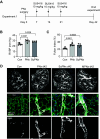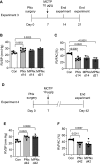Pneumonectomy combined with SU5416 or monocrotaline pyrrole does not cause severe pulmonary hypertension in mice
- PMID: 38810241
- PMCID: PMC11442094
- DOI: 10.1152/ajplung.00105.2024
Pneumonectomy combined with SU5416 or monocrotaline pyrrole does not cause severe pulmonary hypertension in mice
Abstract
In the field of pulmonary hypertension (PH), a well-established protocol to induce severe angioproliferation in rats (SuHx) involves combining the VEGF-R inhibitor Sugen 5416 (SU5416) with 3 wk of hypoxia (Hx). In addition, injecting monocrotaline (MCT) into rats can induce inflammation and shear stress in the pulmonary vasculature, leading to neointima-like remodeling. However, the SuHx protocol in mice is still controversial, with some studies suggesting it yields higher and reversible PH than Hx alone, possibly due to species-dependent hypoxic responses. To establish an alternative rodent model of PH, we hypothesized mice would be more sensitive to hemodynamic changes secondary to shear stress compared with Hx. We attempted to induce severe and irreversible PH in mice by combining SU5416 or monocrotaline pyrrole (MCTP) injection with pneumonectomy (PNx). However, our experiments showed SU5416 administered to mice at various time points after PNx did not result in severe PH. Similarly, mice injected with MCTP after PNx (MPNx) showed no difference in right ventricular systolic pressure or exacerbated pulmonary vascular remodeling compared with PNx alone. These findings collectively demonstrate that C57/B6 mice do not develop severe and persistent PH when PNx is combined with either SU5416 or MCTP.NEW & NOTEWORTHY We attempted to establish a mouse model of severe and irreversible pulmonary hypertension by substituting hypoxia with pulmonary overcirculation. To do so, we treated mice with either SU5416 or monocrotaline pyrrole after pneumonectomy and performed hemodynamic evaluations for PH. Despite this "two-hit" protocol, mice did not exhibit signs of severe pulmonary hypertension or exacerbated pulmonary vascular remodeling compared with PNx alone.
Keywords: Sugen 5416; mice model; monocrotaline pyrrole; pneumonectomy; pulmonary hypertension.
Conflict of interest statement
No conflicts of interest, financial or otherwise, are declared by the authors.
Figures




References
-
- Nicolls MR, Mizuno S, Taraseviciene-Stewart L, Farkas L, Drake JI, Al Husseini A, Gomez-Arroyo JG, Voelkel NF, Bogaard HJ. New models of pulmonary hypertension based on VEGF receptor blockade-induced endothelial cell apoptosis. Pulm Circ 2: 434–442, 2012. doi: 10.4103/2045-8932.105031. - DOI - PMC - PubMed
MeSH terms
Substances
Grants and funding
- the ATS Early Career Investigator Award in Pulmonary Vascular Disease/American Thoracic Society (ATS)
- Bayer PHAB award/Bayer AG | Pharmaceuticals Bayer
- Aldrighetti Research Award for Young Investigators/American Thoracic Society (ATS)
- R01 HL171405/HL/NHLBI NIH HHS/United States
- 1R01HL171405/HHS | National Institutes of Health (NIH)
LinkOut - more resources
Full Text Sources
Medical

